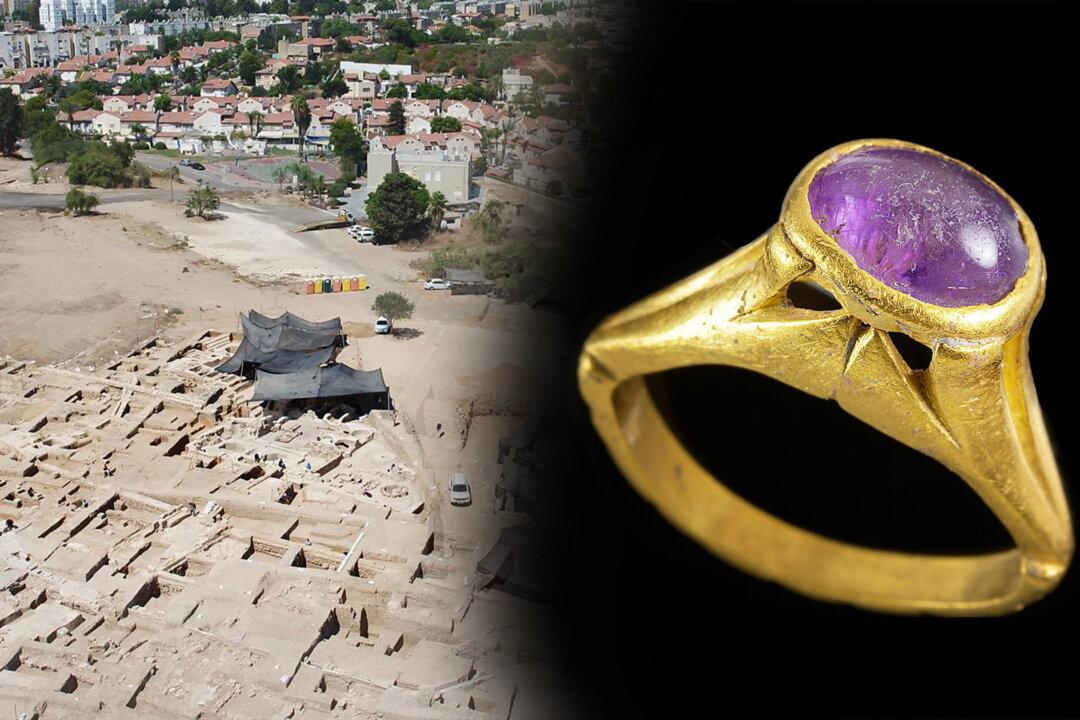The excavation of a huge Late Byzantine period winery in Israel recently yielded a gold ring inlaid with a purple amethyst stone believed to date back to the seventh century.
Researchers from the Israeli Antiquities Authority analyzed the ring, and the stone was determined to be composed of silica—a common material in many other gems—ruling out the possibility of it being simply glass.






